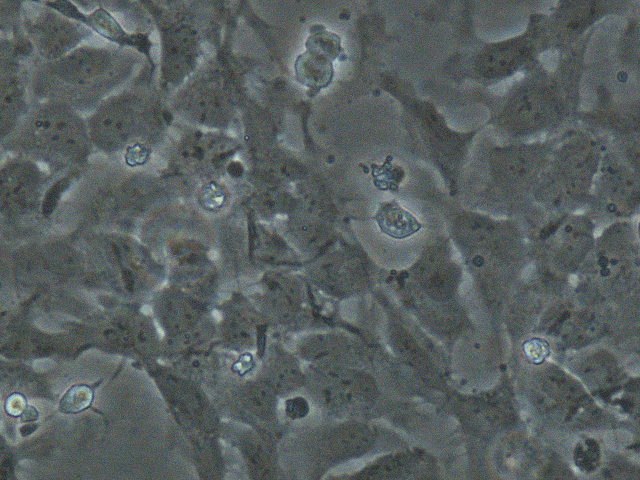Every year, there are approximately 12,500 new cases of spinal cord injury in the United States. Vehicle crashes are the leading causes of spinal cord injuries. The most frequent neurological damage sustained by such injuries is incomplete tetraplegia, followed by incomplete paraplegia. Tetraplegia refers to paralysis of all four limbs (arms and legs), and paraplegia refers to paralysis affecting the legs and possibly the trunk but does not include the arms. Being “incomplete” means that, despite the injury, some motor and sensory function remains.
Image Source: B. Boissonnet
Researchers from Rush University Medical Center are studying a novel approach to treating these spinal cord injuries. The new therapy uses stem cells to treat the spinal cord within 14-30 days of the injury. The stems cells are derived from human embyronic stem cells. They contain progenitor cells that support nerve cells and can potentially restore nerve function. Progenitor cells are cells that, like stem cells, can differentiate to form certain kinds of cells, but are not able to divide indefinitely.
A Phase 1 clinical trial has begun involving AST-OPC1 (oligodendrocyte progenitor cells). The study will test the safety and effectiveness of increased doses of AST-OPC1 in people with a complete cervical spinal cord injury. One individual is currently enrolled in the study. Dr. Richard G. Fessler, the principal investigator for the trial, revealed that the surgical procedure for the injection of the cells went well, and there have not been any intraoperative complications.
The trial participants will include people with neurologically-complete cervical spinal cord injury. People with this type of injury have no sensation or movement below the site of the injury and are paralyzed in the upper and lower limbs. They receive three escalating doses of AST-OPC1 at 14-30 days after the injury and are continuously monitored through neurological exams and imaging methods to determine the safety and effectiveness of the therapy. The goal of the treatment is to restore partial motor and sensory functions. Fessler indicated that even small improvements in these areas could lead to a much better quality of life for people with spinal cord injuries. In order for the therapy to be effective, the spinal cord must be intact and unsevered.
Depending on the success of the clinical trial, AST-OPC1 could be used in the future to treat other conditions involving the spinal cord, such as multiple sclerosis (MS) or amyotrophic lateral sclerosis (ALS).
Feature Image Source: Neural Stem Cells by Joseph Elsbernd










